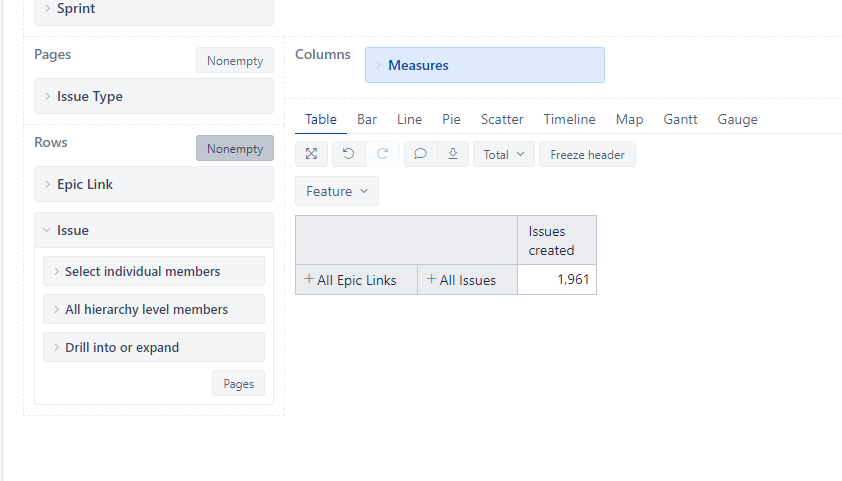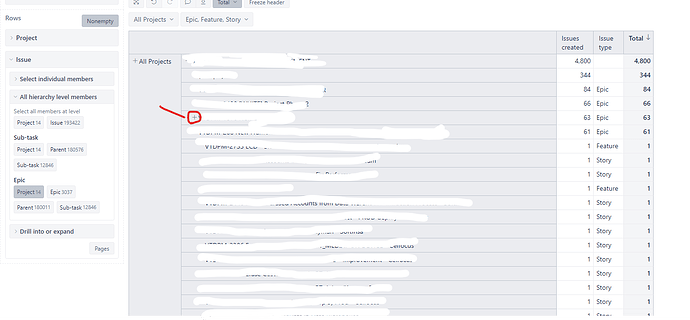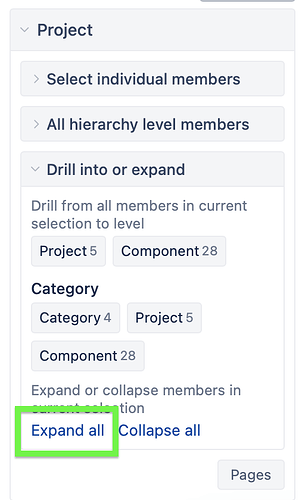Hello I would like to create a table where i show case the all the epics and inside those epics their features and for each feature all the stories associated with them. What I have right now is a dimension of epic links and then the features associated with them but not sure how i would get the stories after the features.
Any help would be aprecciated!! Thanks in Advance

Update right now i have it like this but 3 questions
for each epic will i have to click on the plus icon to show the stories and features is there a way to click on the plus icon for all.
Also it seems like its showing based on the alphabetic order so it shows stories and then features and then stories would there be a way to show all stories and then all the features to have 2 sections and not have them all mixed up.
3rd question even though i have like this my ideal table would have separate columns for each issue type . so one column for epics, another for the features associated with those epics and another for the stories
Hi @Goncalo_Marques,
You might use the Expand all from the “Drill into or expand” section of the dimension.
Generally, issues are ordered by their issue keys. If you want to implement a different sorting logic, you might create a “sorting measure” that would concatenate the different sort criteria - Epic key, issue type, issue creation date, etc.
Grouping Features and Stories together might be possible with an expression like this.
CASE WHEN
--row is relevant
[Measures].[Issues created]>0
THEN
--rank of the Epic with leqding zeroes
Format(
Rank(
Ancestor(
[Issue].CurrentHierarchyMember,
[Issue.Epic].[Epic]),
Ancestor(
[Issue].CurrentHierarchyMember,
[Issue.Epic].[Epic]).Siblings),
--formatting - leading zero
"000")
||
--first letter of issue type
Left([Measures].[Issue type],1)
END
Putting each issue type in a separate columns is possible by putting each issue type in a separate dimension. That might be possible if you have a hierarchy where stories and features are on different hierarchy levels.
Still, that is not recommended, as multiple high-volume dimensions on rows might create an enormous background dataset of all possible combinations of:
all first dimension members
multiplied by all second dimension members
multiplied by all third dimension members…
That might easily lead to out-of-memory issues.
The current situation shows Features and Stories on the same hierarchy level.
Regards,
Oskars / support@eazyBI.com


